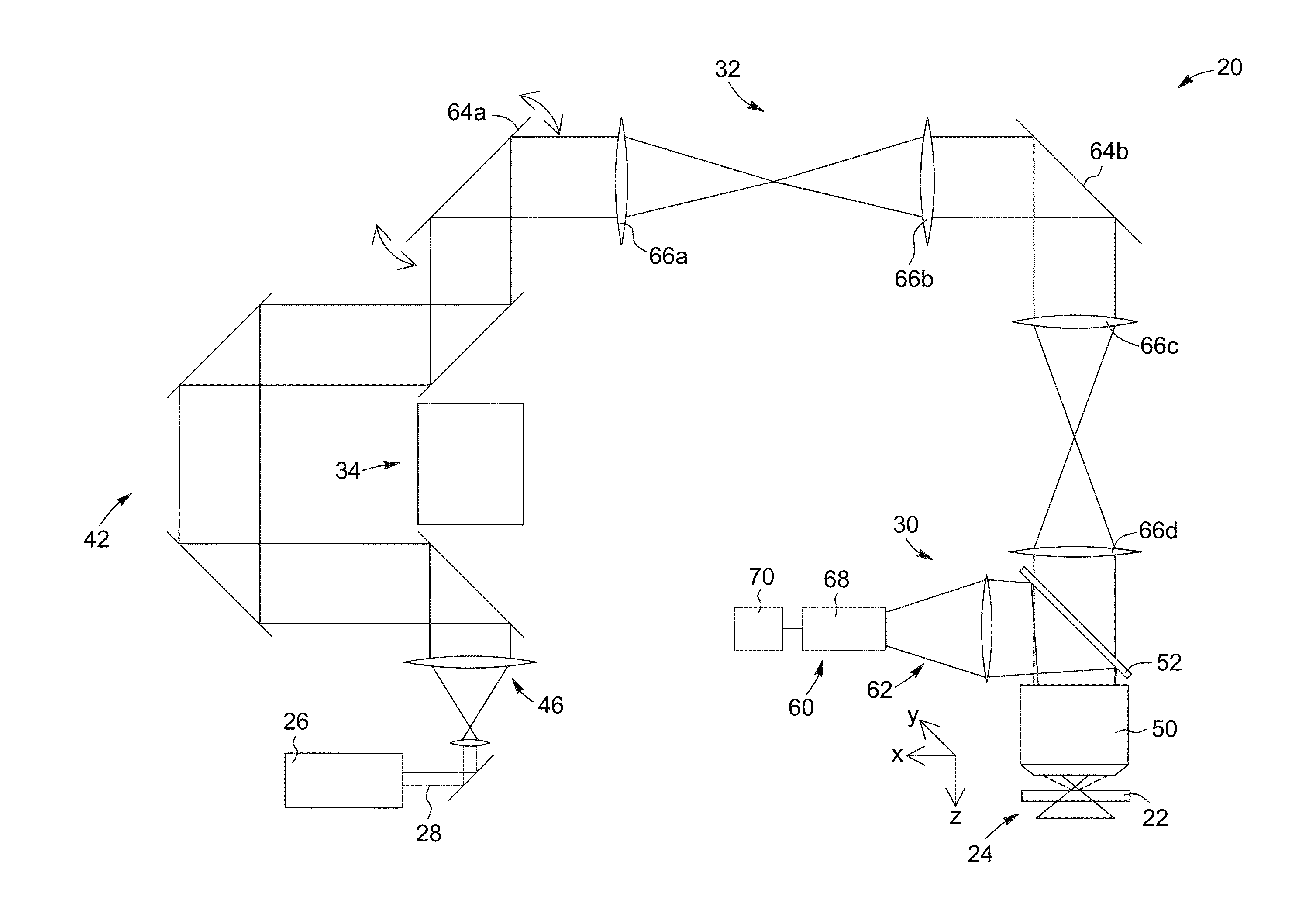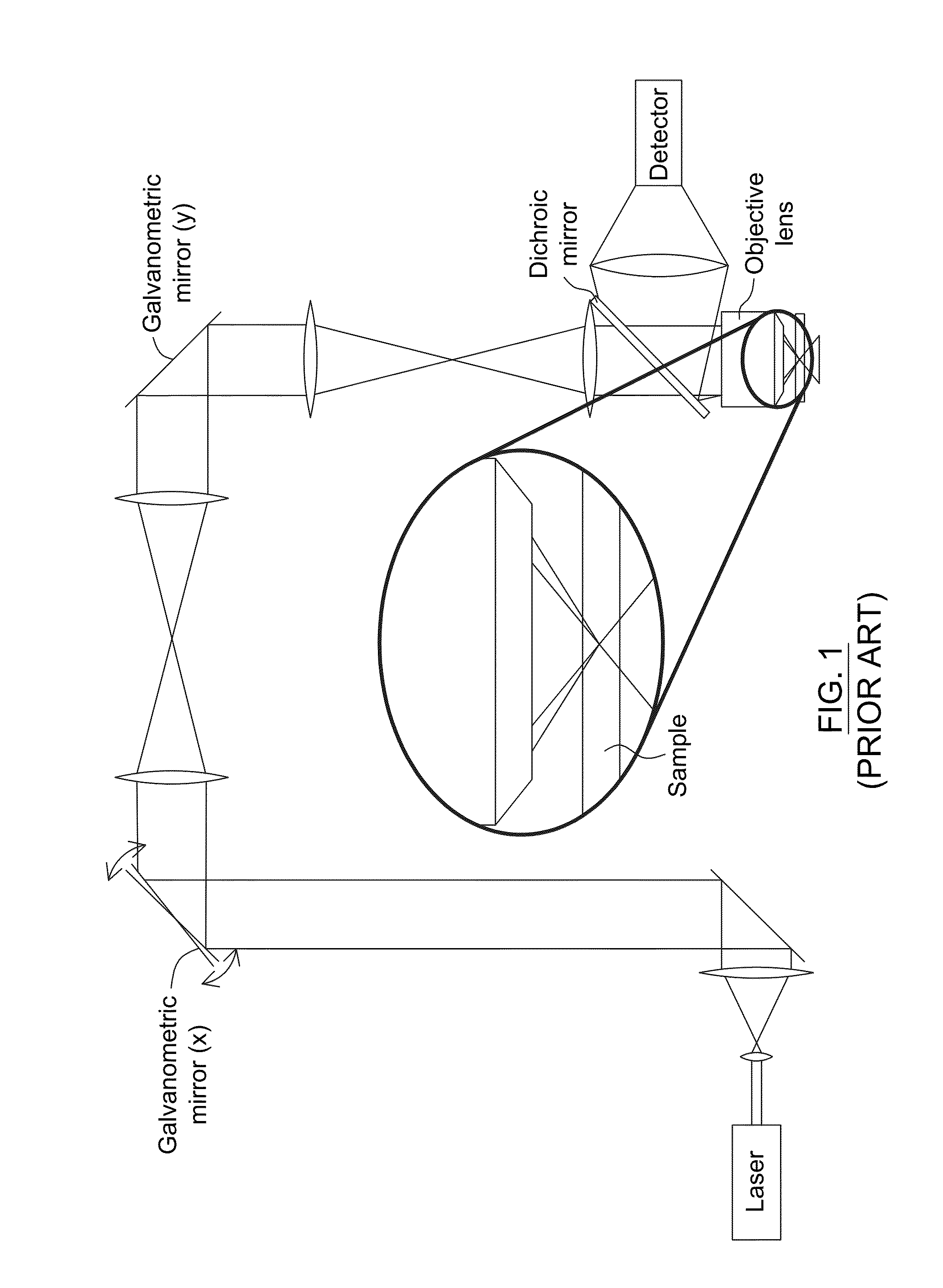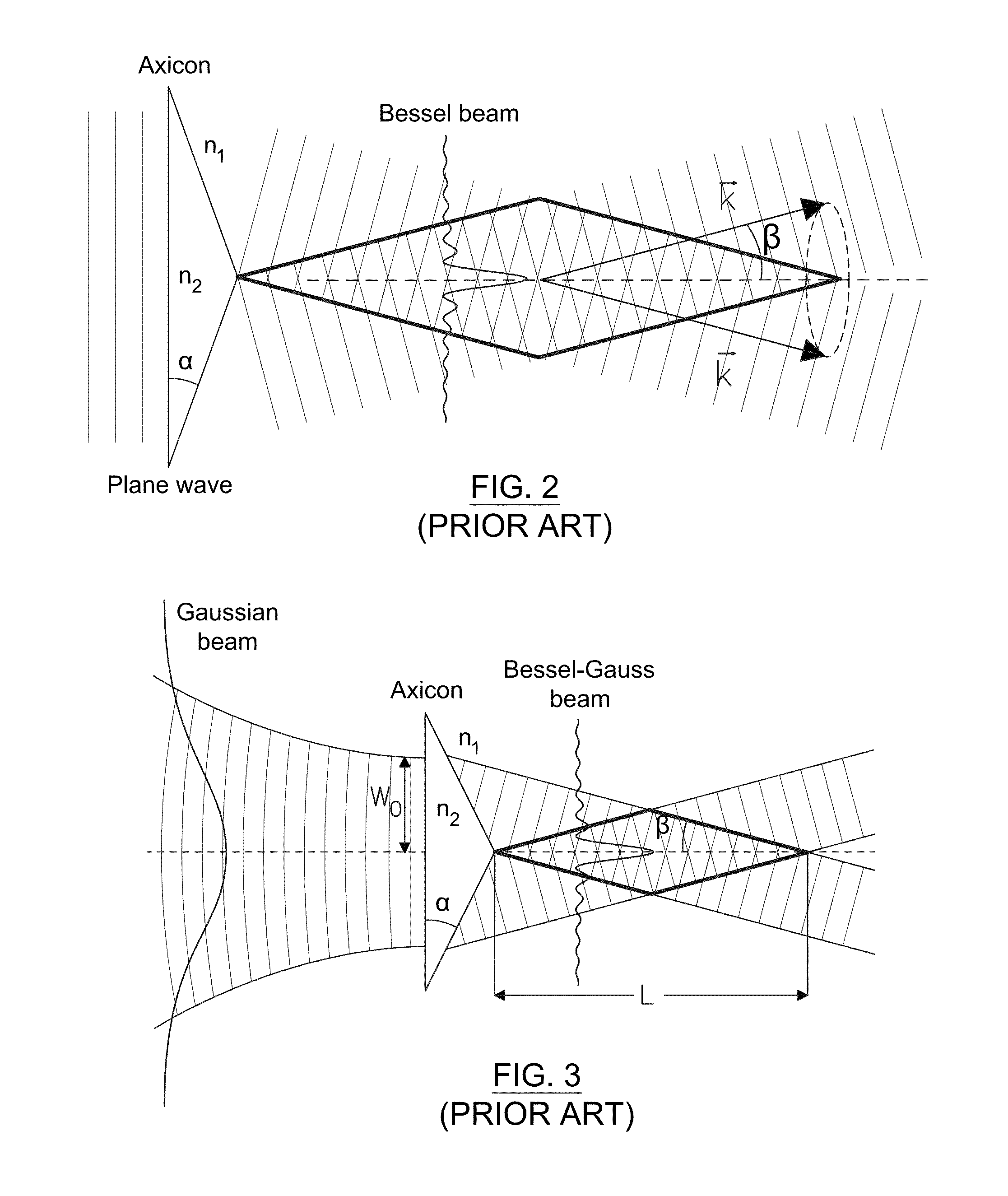Method and system for obtaining an extended-depth-of-field volumetric image using laser scanning imaging
a laser scanning and depth of field technology, applied in the field of laser scanning imaging systems, can solve the problems of reducing the acquisition speed of thick or bulky samples, loss of temporal resolution which may not be suitable, and inability to apply laser scanning microscopy
- Summary
- Abstract
- Description
- Claims
- Application Information
AI Technical Summary
Benefits of technology
Problems solved by technology
Method used
Image
Examples
experimental demonstrations
[0142]Experimental demonstrations illustrating the depth-of-field extension capabilities provided by embodiments of the invention will now be described. As one of ordinary skill in the art will understand, the present invention is not limited to these particular experimental demonstrations.
[0143]The experimental demonstrations described below were performed with a home-built laser scanning imaging system configured for two-photon microscopy. The home-built system allows for the insertion of a beam shaping module between the laser module and the entrance of the scanning module.
[0144]The laser module includes a Ti:sapphire laser [Mira, Coherent (trade name)] with a maximum available power of 900 milliwatts, tuned to a central wavelength of 850 nanometers (nm) in a mode-locked regime. The beam shaping module includes an axicon and a Fourier-transform lens. The axicons are uncoated UVFS conical lenses with angles α=2.5 degrees and α=5 degrees fabricated by Altechna (trade name) were use...
PUM
| Property | Measurement | Unit |
|---|---|---|
| depth of field | aaaaa | aaaaa |
| depth of field | aaaaa | aaaaa |
| depth of field | aaaaa | aaaaa |
Abstract
Description
Claims
Application Information
 Login to View More
Login to View More - R&D
- Intellectual Property
- Life Sciences
- Materials
- Tech Scout
- Unparalleled Data Quality
- Higher Quality Content
- 60% Fewer Hallucinations
Browse by: Latest US Patents, China's latest patents, Technical Efficacy Thesaurus, Application Domain, Technology Topic, Popular Technical Reports.
© 2025 PatSnap. All rights reserved.Legal|Privacy policy|Modern Slavery Act Transparency Statement|Sitemap|About US| Contact US: help@patsnap.com



